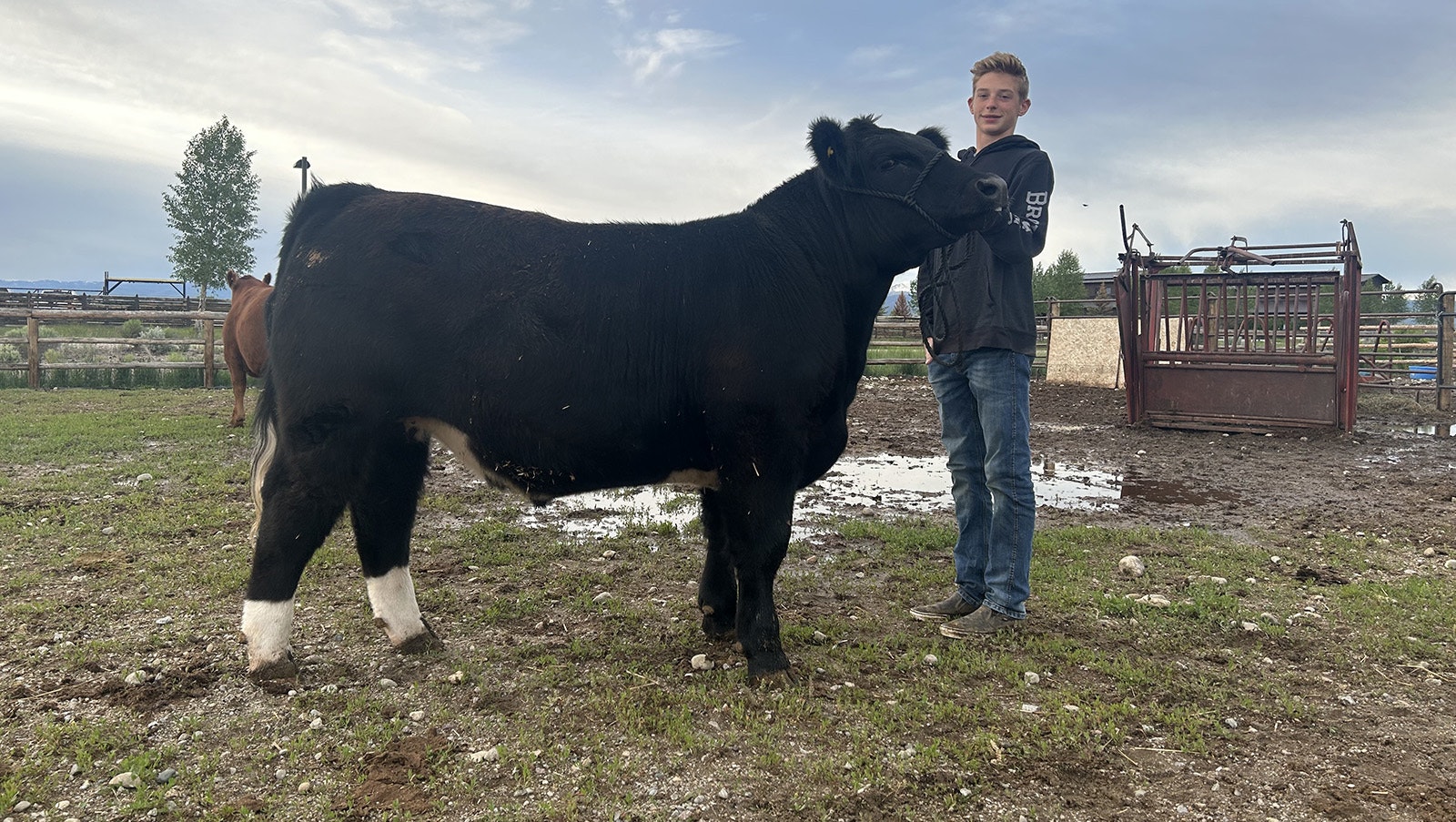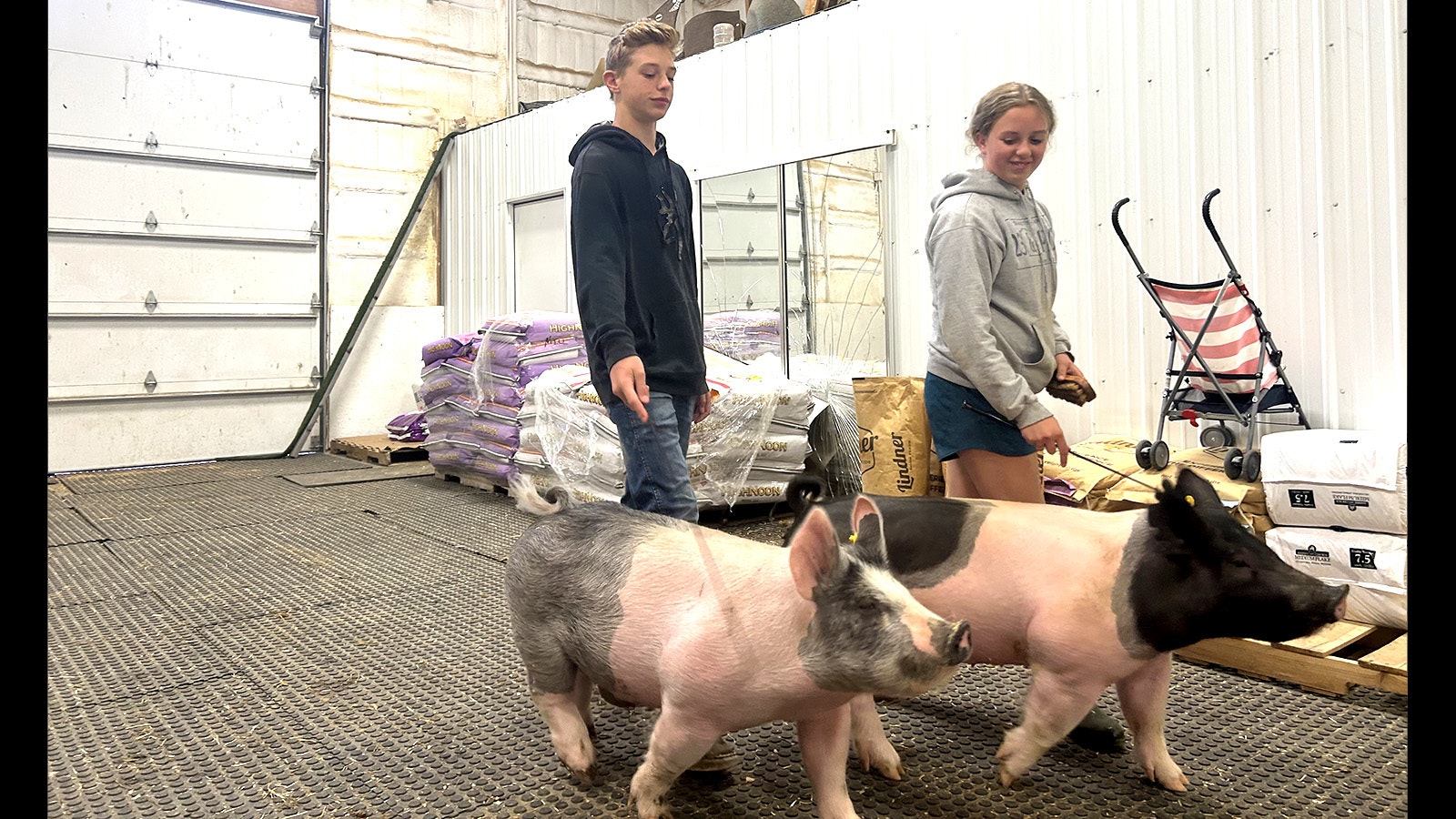Raising show pigs, cattle and sheep for county fairs is a way of life for rural youth all over Wyoming.
When Shane and Daisy Rogers aren’t at home, there’s a good chance of finding them at the 4-H barn outside Pinedale in Sublette County.
Shane, 14, and Daisy, 11, spend four to five hours every day caring for and training their animals to lead and stand squarely to show off their best qualities for the judges. They’ve had to give up time in sports and other activities to excel at livestock showing.
They are both experts at fitting, showing and caring for pigs, sheep and cattle. And they have the hardware to prove it.
The barn bustles with the sounds of pigs snorting and banging against the steel panels of their enclosures. Lambs wearing light purple onesies to help keep them clean nibble on grain.
Outside, five calves mill around a corral waiting on their owners for feed and halter training. Pampering and training these show animals is a nearly year-round routine for the Rogers family.
All About The Sale
The payoff for Shane and Daisy — and scores of other young people across the Cowboy State — comes at their annual county fair 4-H livestock sale. Local businesses support the sale and send kids home with a tidy profit from the sale of their animals.
Show pigs and cattle commonly fetch $3 to $5 per pound at the Sublette County Fair, said Dru Rogers, father of Shane and Daisy.
Sometimes the best animals are sold at the county fair but retained by the owner for an extra month so they can compete in the Wyoming State Fair livestock competition.
Shane has owned and sold livestock for the past six years, and Daisy is in her third year. Both have won numerous awards for their livestock at the county and state levels. In addition, through the spring and summer months, they compete in smaller shows called jackpots, where they’ve also walked away with small amounts of cash and other prizes.
Shane says the jackpot events are a great opportunity to practice for larger shows.
Daisy said competing and losing in events has taught her how to select the best animals and how to adjust their feed to make them look their best.
“Winning is always more fun,” she said.

Lambs Are ‘Stupid Sometimes’
April, their mother, said it took several years for the family to get to this level of proficiency. Dru grew up on a cattle ranch, but neither parent had any livestock show experience as a youth.
“We have a 20-year-old daughter that started when she was 8,” April said. “We did a lot of losing in those early years. She got last place in everything. But she got better over time and ended up buying her first car with her 4-H money.”
Shane and Daisy use their earnings from the previous year’s shows to buy calves in October. The calves weigh around 800 pounds at that time. Depending on the animal’s bone structure, the calves will weigh up to 1,500 pounds by the time the county fair rolls around in late July.
The Rogers kids begin bonding with their calves and halter training soon after the calves are purchased. Sometimes they tie their calves to a pickup and slowly tow them around to get them used to following.
“You have to be really patient to get them to trust you,” said Shane.
With the lambs, Daisy says the halter training part is a bit more challenging.
“They (lambs) don’t learn very fast,” she said. “They’re stupid sometimes.”
Once the animals are comfortable with halters they spend 10 minutes every day walking them around in circles. After that they continue to add time into halter training until they are show-ready.

Then There Are The Pigs
Pigs pose a different set of challenges.
During a lot of 4-H pig shows, it can be hard to tell who is showing what. Kids are dressed in boots, jeans and pearl-button shirts following pigs around a ring with the pigs doing whatever they want.
That’s not the case with Big Blue and Petunia, a barrow and a gilt respectively, that Shane and Daisy plan to show later this summer. These pigs march with military precision, responding to the slightest taps from a handler’s staff.
Their calves are no different. They stand still as their young handlers approach, wait patiently while halters are tied on, lead easily and respond to commands.
Dru said when they buy pigs in March they’ll weigh 60 to 90 pounds, and by fair time they weigh 250 to 300 pounds. Pigs that are fed 3 pounds of feed per day will gain a pound to two each day.
Cattle are expected to gain 2-4 pounds per day and sheep and goats will gain about one-third of a pound per day.
Dru said close to 250 animals are normally sold at the Sublette County 4-H auction each year. Most of the competitors show multiple animals.





